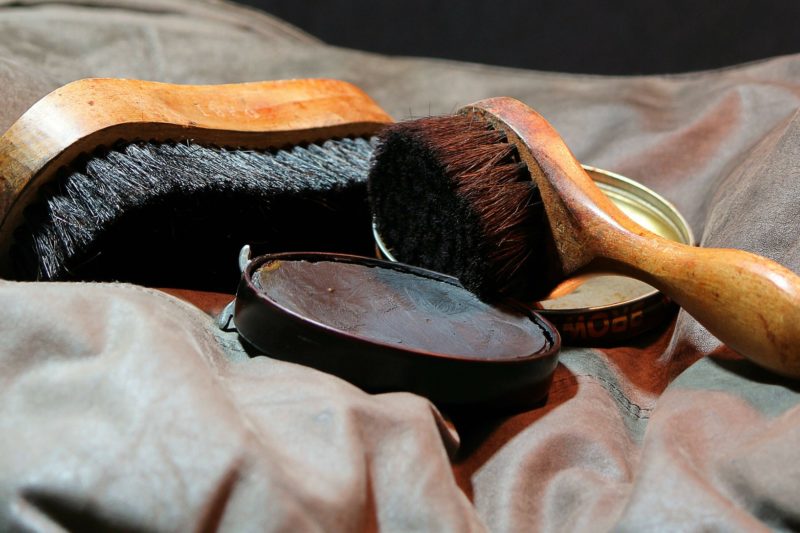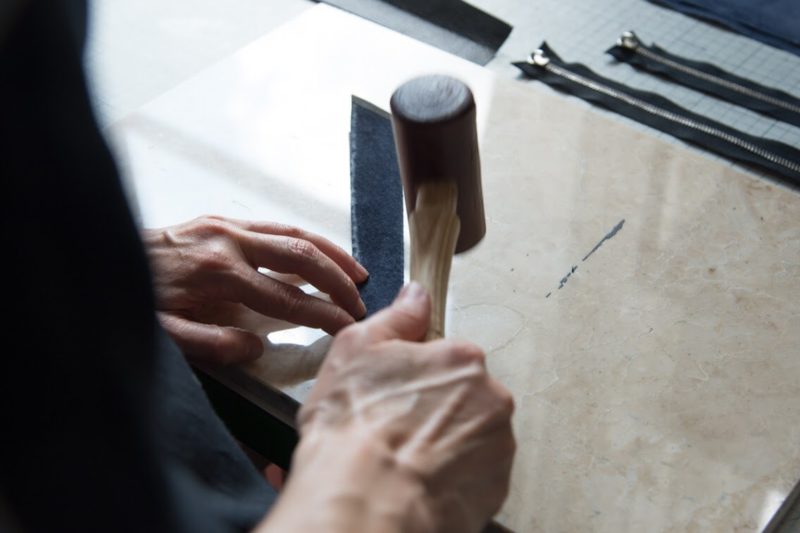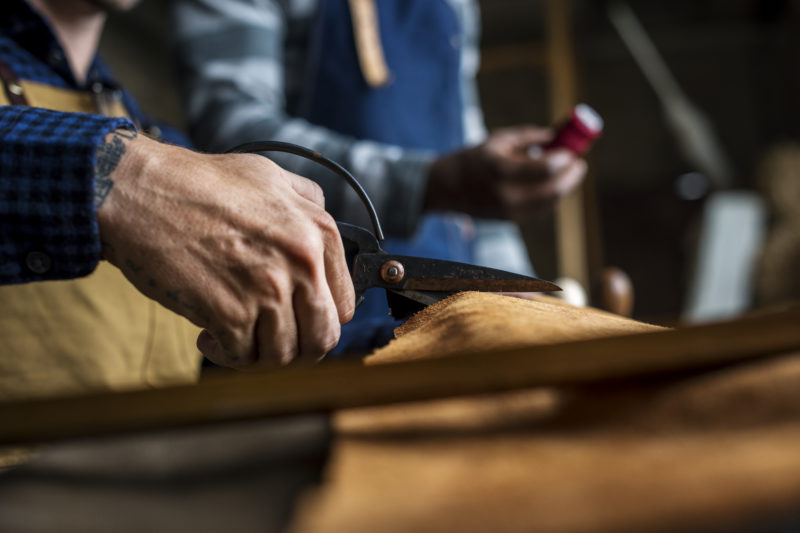Leather is a durable and robust material, but it is also susceptible to long term wear and tear from everyday use. Over time, it loses its natural oils and moisture, causing the leather fibres to dry out and break. These are natural processes that can be safeguarded against with proper care. Here we have provided some tips to help with maintaining your leather.
Understanding the Leather Treatments Products
When you walk down to your nearest leather store, you might often see different products like creams, polishes, waxes and conditioners. Most people tend to look for a product that combines all of it. As the names differentiate, every product has a different role to play during the leather treatment process. Let’s look at what the products are and what they do.
Polish
Merely speaking, aesthetics. Rather than actually protecting your leather, it’s mostly used for the look of your leather products (usually shoes and bags). But, polishing is definitely on the list for everyday leather caring routine as people prefer to make their expensive masterpiece looking pleasing for the eye. Polishing is a must.
Conditioner/Cream
Leather conditioners help your leather from cracking and wrinkles. Gently rub a recommended conditioner for your leather product on the surface so that it can soak in the moisture. We recommend applying leather conditioners every 6-12 months to keep the surface smooth and fresh.
Waterproofing
Waxes provide the leather with a thin coat to repel any liquid substance, like water, snow, and liquor, etc. Depending on how frequently you use your leather products and the location you live in, your waterproofing routine can change. We recommend using waxes over sprays as waxes are durable and can be applied thoroughly on the surfaces.
Damp Cloth
Every once a week, clear out the surface dirt and dust with a clean damp cloth (without soaps and chemicals). Consistently, using minimal care every now and then can greatly help to increase the longevity of your leather products.
Suede Brush
In the case of suede, please do not use any products mentioned above. Rather, use a suede-specific brush to clean and wipe off the dirt from the surface. Also, avoid water as much as possible from suede products
The Must-Knows of Caring For Your Leather
Let it breathe
Let’s not forget the most basic aspect of leather, skin. To prevent the leather surface from cracking and rotting, proper ventilation is a must. Air can naturally pass through leather, which helps to remove moisture naturally. Just in case, you have a leather product sitting somewhere sealed up, hurry and let your leather breathe some fresh air. Storing leather isn’t hard but does require some specific products. Using pillowcases for shoes, bags and accessories are a great way to store your leather product or travel with it.
Keep away from sunlight/heat
Always let your leather dry naturally, even if it takes longer than any other clothes you have. Direct sunlight can permanently damage your leather, making it dry. If in case your leather is wet, you can get tempted to dry it out quickly or throw some heat on it. But please refrain from it as it can stretch out the leather and destroy the structure.
Regular cleaning with a damp cloth
The easiest and the most helpful way of taking care of your leather is to regularly clean it with a damp cloth. Everyday leather products like jackets, shoes and bags can easily accumulate a lot of dust and dirt, so just a minimal wipe-down with a damp cloth and greatly increase the look and feel of your leather products. Over time, your leather will last longer and will be looking fresh.
Do not stretch
Do not overstretch your leather goods as they will lose their original shape. Do not hang your leather goods for a long time as it can greatly affect the shape of your leather. If you overfill your wallet or bag it will never retain its original shape.
How to treat scratches, marks and stains
Take care to avoid scratching or otherwise marking your leather product, but if they do occur then you can take steps to mitigate the damage.
If you stain the leather, do not try to remove it yourself as you could end up lifting the colour from the leather, exacerbating the issue. It’s always better to consult a leather specialist or someone who deals with leather directly.
To treat scratches, you can rub a very small amount of leather oil onto the mark and let it soak in (vaseline also works well). After it has dried completely, check if the scratch is still visible and if so apply a small amount of shoe polish and blend evenly.
Whether it is for yourself or your customers, always let the end-user be aware of the care needed to keep your leather in its best condition.
For information on how to store your leather visit our post on How to store your leather goods!
For more information on leather care please check out these articles provided below.
- Aftercare
- Care guide
- A guide to leather scratch repair
- How to care for leather handbags
- How to care for leather
- 5 Tips for leather care
RELATED ARTICLES
A GUIDE TO LEATHER GRADES
FIVE TIPS ON RECOGNISING GENUINE LEATHER FROM FAKE LEATHER
WHY LEATHER MANUFACTURERS CARE WHEN SOURCING THEIR GOODS
A BRIEF HISTORY OF LONDON’S LEATHER INDUSTRY AND WHAT WE HAVE LEARNT FROM IT
LUXURIOUS LEATHER CHECKLIST: WHAT TO KNOW BEFORE YOU BUY
7 PLACES TO FIND QUALITY GENUINE LEATHER IN LONDON
8 BENEFITS OF MANUFACTURING YOUR LEATHER GOODS LOCALLY
HOW TO STORE YOUR LEATHER GOODS





